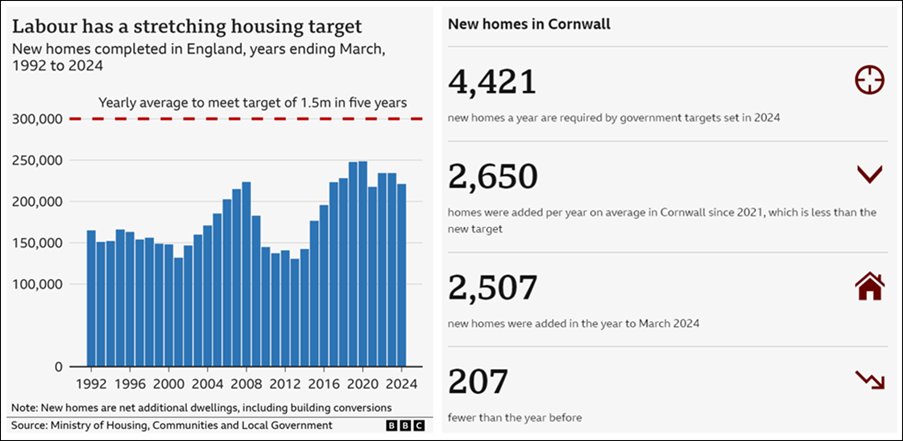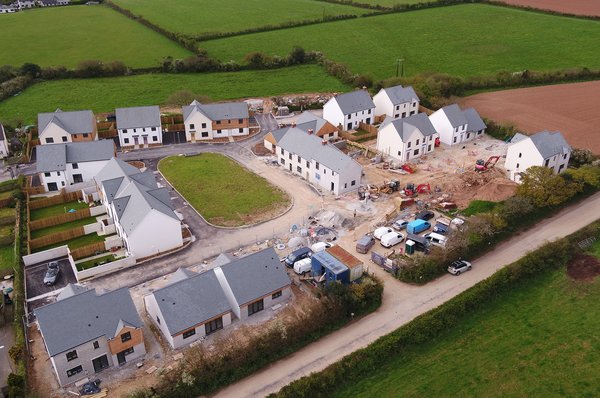In his latest opinion piece, Chief Executive of Coastline Housing Allister Young takes a look at the government’s headline-grabbing house building figures and what they actually equate to on a practical level.
If you’re particularly interested in politics or housing, you might have picked up the news just before Christmas that building 1.5 million new homes in the next five years was one of the government’s six ‘milestones’, one of the six things that it wants to be judged on in 2029 (when the next general election is due).
Last week the BBC did some work, and published a story looking at the practical challenges of building 1.5 million homes in five years, and what the new housing targets look like in different parts of the country.
The BBC story lets you put in your postcode, and it will tell you how many homes are currently built in your area, and how many are needed under the new targets. I’d encourage you to have a look and read the article, not least because it does a good job of summarising why it is difficult to increase the numbers of homes that are built. But in case you don’t, the image below clearly sets out both the national challenge, and the local challenge in Cornwall, where we need to get from about 2,500 homes a year to nearly 4,500 homes a year.

Hmmmm. 1.5 million homes nationally over five years, and 4,500 homes a year in Cornwall. Those both sound like frighteningly large numbers. Which I think highlights a problem with how these things tend to be approached by government. Governments seem to be very fond of coming up with initiatives and targets which sound large and impressive. But without context, or a story, ‘large and impressive’ can come across as ‘scary and impossible’.
So I’ll try and provide some context, and make an appeal for a story.
First of all, are they large numbers? Sort of. But also not. There are about 25 million homes in England, so if the government is aiming to build 300,000 homes a year, that’s an increase of about 1.2% a year. In Cornwall, we have about 277,000 homes, so building 4,500 homes would be an increase of about 1.6% a year. Do those sound like slightly smaller numbers now?
Secondly, should we be scared of how that amount of house building could change the country? Surely there isn’t enough space for all that new construction? The truth is a bit different to what most people think. When asked how much of Britain is densely built on, the average estimate people give is 47%. The actual percentage is around 5% (in fact only 0.1% is densely built on), and Cornwall is lower than that.
This video from Friends for the Earth takes 100 seconds and is a fantastic illustration of what the UK is really like. It shows what the land from above looks like, and demonstrates very clearly just how much space there is. The image below from 1m 35s in is my favourite bit, where someone gets chased by a cow.
I’m not one for New Year’s Resolutions. But if I could have a New Year’s Wish, it might be that governments get better at telling the story of why we should do things. Instead of just saying ‘we need to build 1.5 million homes’, I’d love it if the government started by setting out clearly why we need to build new homes, how it benefits the country as a whole, the communities we live in, and all of us as individuals. Then to set out how it’s going to do that. And then it can start talking about what the target is.
That approach of setting out first why, then how, before talking about the what would be much more likely to result in wider public support towards the measures that are needed to end the housing crisis. Explaining why we need to build 1.5 million homes, rather than just saying that’s what it wants to do. The National Housing Federation has been campaigning on this for the last year, setting out why the country needs a national housing strategy, and what it could achieve. Simply put: decent homes that people can afford are the foundations for a good life and strong economy. They are the foundation of our health, happiness and prosperity.
If you are interested in learning more about asking ‘why’ then I’d definitely recommend watching this TEDTalk from 2009 by Simon Sinek, that clearly articulates why starting from ‘why’ is so important, and why companies that take that approach are much more successful in selling their products (which are the ‘what’) to the public.
